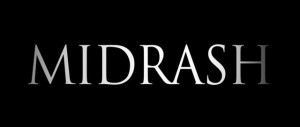Midrash: The Basics
 This semester I am diving head first into the world of midrash. I am taking my theological talents to Virginia Theological Seminary once a week to join 17 other Episcopal seminarians and a Jewish rabbi as we explore the theological content of the rabbinic flavor.
My charcoal Yoda threatened me if I did not share my experiences in class and my own thoughts about the materials throughout the semester: "If you don't blog about this course, I will come to your house and kick down the door. Either than, or do some very unflattering Midrash on you".
This semester I am diving head first into the world of midrash. I am taking my theological talents to Virginia Theological Seminary once a week to join 17 other Episcopal seminarians and a Jewish rabbi as we explore the theological content of the rabbinic flavor.
My charcoal Yoda threatened me if I did not share my experiences in class and my own thoughts about the materials throughout the semester: "If you don't blog about this course, I will come to your house and kick down the door. Either than, or do some very unflattering Midrash on you".
So here we go. I make no assertions to my expertise in the midrash arena. The only thing I can promise is that I will be honest with my own reactions to texts and to the teachings of our professor.
Before I can begin to share my midrashic thoughts I think we need to address the basics.
Midrash comes from the ambiguity of the Jewish texts. It is something that occurred over time and was not a single book or commentary submitted for community review and publishing. Midrash was edited over time and worn smooth by the time and use of the community.
The purpose of midrash is to examine or seek out a deeper meaning of the text based upon the Rabbi's agenda or what the text was actually speaking to. When biblical interpretation moved away from fundamentalism, the doors to scriptural interpretation and contextualization were thrown open.
Types of Midrash
- Halacha - the laws (to walk or go to) - Jewish law is always moving, concerning itself with creating norms and asking 'why?' - legalistic view
- Aggadah - the narratives, concerned with contextualizing and asking 'how?', creating a vision
Why Midrash
- Examining the motivations and meaning of the Bible
- Resolve confusions
- Fill in gaps
- Expose details of scripture (ie. new values, translation, addressing value changes within society)
How to Read a Midrash
- It is critical when looking at a midrash to understand the context of the quoted or primary verse. This means that you should first read the primary verse, as well as any supplementary verse. Critically look at and examine the base text. Ask questions like, "what is the historical/language of the text?" After reading and unpacking the base text, move onto the midrash
- While reading, keep these questions in the back of your mind: what's redundant or shocking with the text, what is being said about the character of God, what is actually happening in the text, and what context was the text written in and for?
Consider Trying to Answer These Questions
- What is the problem or question the midrash is responding to?
- How does the midrash resolve the problem or question?
- Did the midrash answer questions that you had at your initial reading? If so, what were your questions?
- Would you have resolved the problem or question differently? This is your opportunity to take ownership of the text!
While this is just a starting point for midrash, I'm sure there will be more to add throughout the semester. Midrash is an opportunity to engage Biblical texts in a way that treats them both as historic-scriptural texts and as texts that are still relevant in 2014.